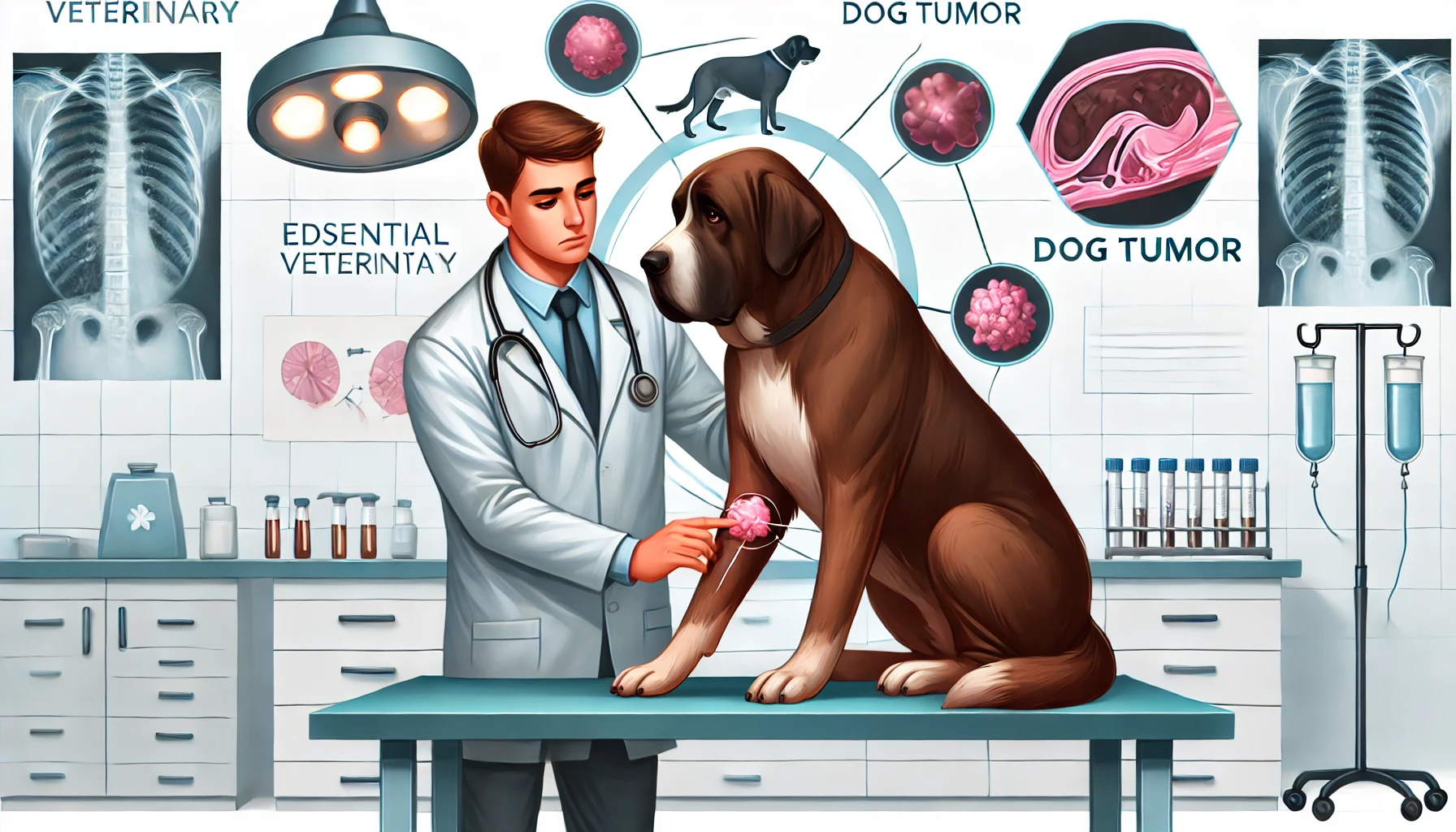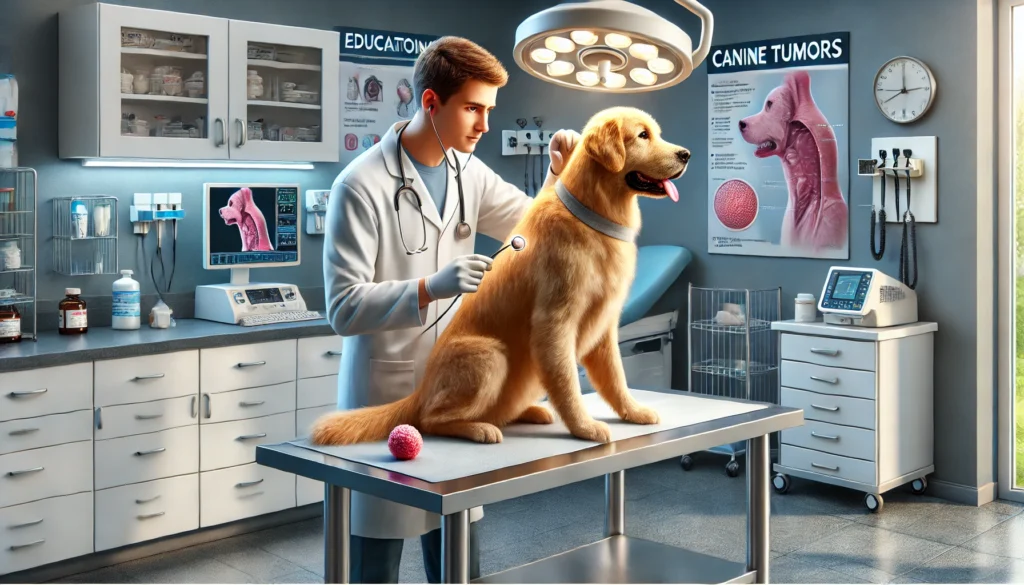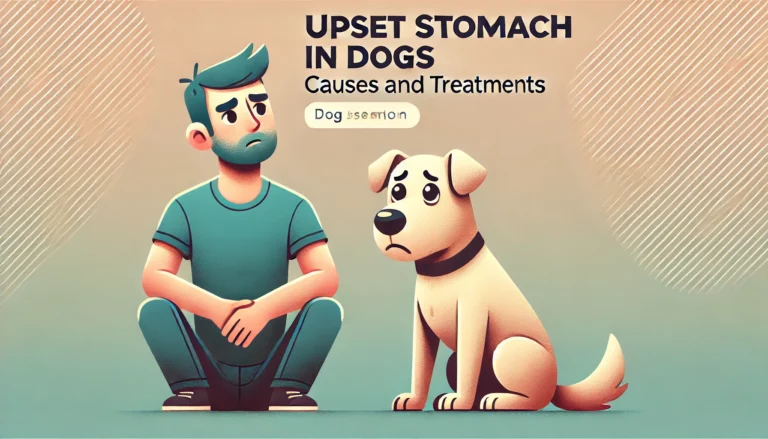Dog Tumors: Symptoms, Causes, Treatment and FAQs

a comprehensive guide
Dog Tumors are a common health concern, ranging from benign growths to malignant neoplasms that require immediate attention. Understanding the symptoms, identifying the causes, and exploring treatment options are crucial for dog owners navigating through these challenging conditions. This comprehensive article will address common questions and provide a detailed look at the various aspects of dog tumors.
Understanding Dog Tumors
A tumor, or neoplasia, refers to an abnormal growth of cells or tissues in dogs. These can be classified as benign (non-cancerous) or malignant (cancerous), affecting dogs of all ages and breeds. Some tumors are visible like masses on the dog’s skin, while others, such as those in the abdomen or internal organs, might not be noticeable until they cause significant health issues.
Types of Dog Tumors
Benign Tumors:
- Lipomas: Fatty tumors under the skin, soft and movable.
- Papillomas: Wart-like tumors caused by a virus, typically found on the skin or mucous membranes.
- Adenomas: Tumors of the glandular tissue, often seen in the sebaceous glands.
Malignant Tumors:
- Mast Cell Tumors: One of the most common skin tumors in dogs, which can also affect internal organs.
- Melanomas: Aggressive tumors that are common in the mouth or digits.
- Osteosarcomas: Bone tumors known for being particularly aggressive.
do you know
The Saint Bernard, a gentle giant known for its friendly demeanor and impressive size, is one of the most beloved dog breeds around the world. This breed not only captures hearts with its striking appearance but also has a rich history as a rescue dog in the Swiss Alps. Understanding the health and care needs of the Saint Bernard is essential for any prospective owner. This guide will cover everything you need to know about the Saint Bernard, from health considerations to nutrition and training.
Symptoms of Dog Tumors
The symptoms of dog tumors can vary widely depending on the type, location, and stage of the tumor. Common signs include:
- Visible Lumps and Bumps: These can be soft or hard, movable or immovable, and may grow over time.
- Swelling: Especially if the tumor affects a limb or body cavity.
- Chronic Pain: Especially with bone tumors.
- Weight Loss and Loss of Appetite: Common in more advanced stages.
- Lethargy and Depression: As the dog’s quality of life is affected.
- Respiratory Problems: If the tumor is in the lung area.
- Changes in Skin and Coat: Including odors, discharge, or ulcerated tumors.
Causes of Dog Tumors
The exact causes of many tumors are not well understood, but several risk factors are identified:
- Genetics: Certain breeds are predisposed to specific types of tumors. For example, Boxers are prone to mast cell tumors, while large breeds like Great Danes are at risk for osteosarcomas.
- Age: Older dogs are more likely to develop tumors than younger ones.
- Environmental Factors: Exposure to carcinogens, like certain chemicals and possibly second-hand smoke, can increase the risk.
- Diet and Exercise: Obesity can be a risk factor for some types of cancer.
Diagnosis of Dog Tumors
Diagnosing dog tumors involves a combination of veterinary examination and diagnostic tools:
- Physical Exam: Palpation of lumps or internal masses.
- Imaging Techniques: X-rays, ultrasound, CT scans, and MRI to visualize the tumor’s location and size.
- Biopsy and Cytology: Taking a sample of the tumor for microscopic examination.
- Blood Tests: To assess the dog’s overall health and organ function.
Treatment Options for Dog Tumors
Treatment varies based on the tumor’s type and stage:
- Surgical Removal: Often the first line of treatment for accessible tumors.
- Radiation Therapy: Used for tumors that are difficult to remove surgically.
- Chemotherapy: For systemic treatment of cancer, especially if there is a risk of metastasis.
- Immunotherapy: A newer form of treatment that helps the immune system recognize and fight cancer cells.
- Palliative Care: Managing symptoms to improve quality of life for non-treatable tumors.
FAQs About Dog Tumors
1. Can dog tumors be prevented? While not all tumors can be prevented, maintaining a healthy lifestyle and regular veterinary check-ups can help catch them early.
2. What does a tumor feel like on a dog? Tumors can feel different depending on their type and location. Lipomas, for example, are usually soft and mobile, while osteosarcomas are hard and fixed.

3. Are tumors in dogs painful? Pain depends on the tumor type and location. For example, internal tumors might not cause pain until they are quite large, while tumors involving bone or nerve tissue can be very painful from an early stage.
4. How long can a dog live with a tumor? This depends greatly on the type of tumor and its malignancy. Benign tumors that don’t affect the dog’s vital functions may not shorten a dog’s life, while aggressive cancers can lead to a more rapid decline.
5. What should I do if I find a lump on my dog? Any new lump or change in an existing lump should be evaluated by a veterinarian as soon as possible to determine if it is a tumor.
Conclusion
Dog Tumors, Understanding the various aspects of dog tumors is crucial for early detection and effective treatment. Regular veterinary visits and paying close attention to your dog’s health can help manage or even prevent some tumors. With advancements in veterinary care, many dogs with tumors live full and healthy lives.
What are the symptoms of a Dog Tumors?
Symptoms of a Dog Tumors can vary widely depending on the tumor’s type, location, and size. Common signs include visible lumps or bumps on or under the skin that may grow over time. Other symptoms might not be as obvious and include swelling in any part of the body, lameness or discomfort if the tumor is affecting bones or muscles, and chronic weight loss. Dogs may also exhibit signs of illness such as lethargy, depression, and a decrease in appetite. If the tumor is internal, symptoms could include difficulty breathing, diarrhea, vomiting, or changes in bathroom habits. Neurological signs such as seizures or behavioral changes might occur if the tumor is in the brain. It’s crucial to monitor your dog for any unusual signs and consult a veterinarian for a proper diagnosis if any of these symptoms appear.
How long can a dog live with bone cancer without treatment?
Dog Tumors, The prognosis for a dog with bone cancer, such as osteosarcoma, without treatment is generally poor. Typically, the expected survival time without any form of treatment is about 1 to 2 months, as this type of cancer is highly aggressive and can lead to significant pain and discomfort. The cancer is likely to spread rapidly, and as it progresses, it can cause debilitating symptoms like severe pain, fractures, and loss of mobility. Treatment options such as surgery, chemotherapy, and radiation can significantly extend life expectancy and improve quality of life, but without these interventions, the disease progresses quickly.
How fast can grow a Dog Tumors?
The growth rate of a Dog Tumors can vary depending on the type of tumor and the individual dog’s health. Benign tumors generally grow slowly and may not change for many years. Malignant tumors can grow at a much faster rate, sometimes doubling in size in just a few months. Factors influencing tumor growth include the tumor’s location, the dog’s overall health, and the presence of certain genetic markers. Aggressive cancers like lymphoma, mast cell tumors, and osteosarcoma are known for their rapid growth and progression, underscoring the importance of early detection and treatment.
Can stress cause Dog Tumors?
There is no direct evidence that stress alone causes Dog Tumors, but chronic stress can weaken the immune system, potentially making a dog more susceptible to various health issues, including cancer. Stress affects the body’s ability to repair DNA and regulate inflammation, which can indirectly contribute to tumor development. Managing stress through regular exercise, a healthy diet, and a stable environment can help maintain your dog’s overall health and reduce these risks.
Are tumors life threatening for dogs?
Whether tumors are life-threatening for dogs depends on several factors, including the type, location, and malignancy of the tumor. Benign tumors are generally not life-threatening and often remain localized. However, malignant tumors can be life-threatening as they have the potential to grow rapidly and metastasize to other parts of the body. Early detection and treatment are crucial in managing the health impacts and improving outcomes for dogs with tumors.
What causes tumors?
Tumors are caused by abnormal cell growth and can arise due to a variety of factors including genetic predisposition, environmental exposures, certain viruses, and lifestyle factors such as diet and exercise. Genetic mutations play a key role, whether inherited or acquired, in the development of tumors. Carcinogens such as tobacco smoke, pesticides, and certain chemicals can also contribute to the risk of developing tumors. In dogs, some breeds have a higher predisposition to certain types of cancer, indicating a genetic component.
Can dogs survive cancer without treatment?
The likelihood of a dog surviving cancer without treatment depends greatly on the type of cancer, its stage at diagnosis, and the overall health of the dog. Some cancers, particularly those that are slow-growing and localized, may not immediately impact a dog’s quality of life. However, most cancers will eventually lead to significant health issues and suffering without treatment. Survival rates without treatment are generally poor, especially for aggressive or metastatic cancers. Treatment options such as surgery, chemotherapy, or radiation can dramatically improve outcomes.
What are the final stages of bone cancer?
In the final stages of bone cancer, dogs typically experience significant pain and mobility issues. Symptoms may include severe lameness, swelling at the tumor site, and pathological fractures where the bone breaks at the weakened point affected by cancer. Dogs may also show signs of systemic illness, including lethargy, loss of appetite, and weight loss. Pain management and palliative care are critical in these stages to ensure the dog’s comfort and quality of life.
Is bone cancer painful for dogs?
Bone cancer, such as osteosarcoma, is typically very painful for dogs. The tumor can lead to deep, aching pain, which may worsen with movement and can significantly affect the dog’s quality of life. Managing pain is a key aspect of treatment for dogs with bone cancer, involving medications like nonsteroidal anti-inflammatory drugs (NSAIDs), opioids, and other pain relievers designed to reduce discomfort and improve mobility.
Can dogs recover from a tumor?
Recovery from a tumor in dogs depends on the tumor’s type, location, and whether it is benign or malignant. Benign tumors often can be completely removed with surgery, and many dogs recover with no further issues. Malignant tumors may require more extensive treatment, including surgery, chemotherapy, or radiation. While some dogs respond well to treatment and can live for years after a cancer diagnosis, others may have more limited options depending on the cancer’s aggressiveness and stage.
Can tumors be painful for dogs?
Tumors can be painful for dogs, especially if they press on nerves, invade bones, or cause inflammation. The level of pain depends on the tumor’s location and type. Pain management is an important part of treatment for dogs with tumors, aiming to ensure comfort and maintain quality of life.
Can a tumor appear overnight in dogs?
While tumors themselves do not develop overnight, small tumors can suddenly become noticeable if there is rapid growth, swelling due to inflammation, or bleeding into the tumor. Sometimes what seems like a sudden appearance is just a quicker detection of a tumor that has been growing gradually and unnoticed.
How can I slow down my dog’s tumor growth?
Slowing down tumor growth in dogs can sometimes be achieved by integrating medical treatment with supportive care. This might include appropriate veterinary treatments such as chemotherapy or radiation therapy, combined with a well-balanced diet rich in nutrients that support immune function. Regular exercise and maintaining a healthy weight can also help, as obesity is linked to increased cancer risks. Consultation with a veterinary oncologist can provide guidance tailored to your dog’s specific condition.
Can emotional stress cause a tumor?
There is no conclusive evidence that emotional stress alone directly causes tumors in dogs. However, long-term stress can weaken the immune system and may indirectly increase the susceptibility to various diseases, including tumors, by affecting overall health.
How do dogs act when they have a tumor?
Dogs with tumors may exhibit a range of behaviors depending on the tumor’s location and severity. Common signs include lethargy, reduced interest in play or interaction, increased sleeping, and possibly aggression or irritability due to pain. Dogs may also lick or chew at the site of a tumor, especially if it is accessible and causing discomfort.
Why do dogs get tumours?
The reasons dogs develop tumors include genetic factors, environmental exposure, and lifestyle choices. Certain breeds are genetically predisposed to specific types of cancer, suggesting a strong hereditary component. Environmental factors such as exposure to carcinogens can also play a role, as can lifestyle factors like diet and exercise.
Do tumors hurt to touch?
Tumors can be painful to touch if they are located near nerves or if they have caused inflammation or damage to surrounding tissues. The sensitivity of a tumor can vary, so it’s important to be cautious and gentle when examining any lumps or bumps on a dog to avoid causing pain.






